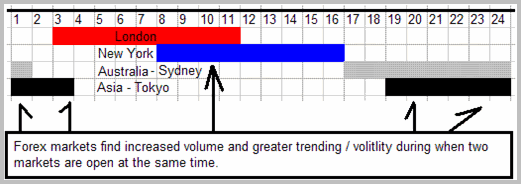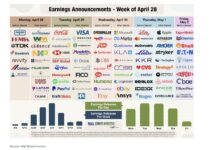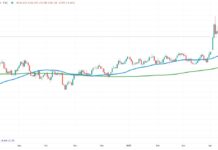 By Jeff Wilson
By Jeff Wilson
Since I will be doing some writing about the Forex market and possibly sharing some of my trade ideas/setups down the road, I thought it would be a good idea to talk about some basic Forex fun facts and terminology.
Here are a few interesting tidbits about trading Forex.
Trading hours:
The Forex market trades 24/5. It shuts down Friday afternoon and opens again Sunday afternoon (Eastern time) when the Asian markets open in New Zealand.
Size of Forex Market:
Approximately $1.9 Trillion per day is traded value in spot forex transactions…yes trillion. This makes it the world’s largest and most liquid market in the world.
No Insider Trading Rule:
Plain and Simple. If you think institutional traders get away with this in the stock market when there are statutes in place, expect those with information to be fearless in the Forex market.
What this means for you if you decide to trade Forex:
Depending on the currency pair, you know that there will be ample liquidity thus minimizing slippage risks on executions. However, this does not mean that the volume and liquidity is present 24 hours a day. Here’s a good graphic from tradingmarkets.com on the best times to find liquidity and volume. For example, EURUSD GBPUSD USDCHF would probably have the heaviest volume from 8-1130 AM ET whereas EURJPY GBPJPY would probably have a good portion of trading volume from 230-4AM ET

Terminology:
- Currency Pair – Forex trading consists of buying one currency and simultaneously selling another. The first currency quoted is referred to as the base currency and the second quoted currency is called the quote currency. In most Forex trading, the US Dollar USD is the base currency. The exceptions are against the Euro (EUR), British Pound (GBP), and Australian Dollar (AUD). There are many currency pairs to choose from and are grouped into either major or minor currencies. The major currencies are the most frequently traded and thus the most liquid currencies. These are the USD (aka “US Dollar” or “Buck”), EUR (aka “Euro” or “Fiber”), JPY (aka “Japanese Yen” or “Yen”), GBP (aka “British Pound” or “Cable”), CHF (aka “Swiss Franc” or “Swissy”), CAD (aka “Canadian Dollar” or “Loonie”) and AUD (aka “Australian Dollar” or “Aussie”). Minor currencies include the NZD (aka “New Zealand Dollar” or “Kiwi”), SGD (aka “Singapore Dollar”) and MXN (aka “Mexican Peso”). Thus, if you wanted to put on a trade where you want to go long the USD vs. the JPY, you will want to go long the USDJPY pair.
- Transitivity – If you are long the USD vs. the JPY (long USDJPY) and short the USD vs. CAD (short USDCAD) in the same USD amount, you are effectively long the CAD vs the JPY (long CADJPY).
- Pip – Refers to the smallest incremental unit that a currency pair moves. It is synonymous to “tick” for futures trading. For example, 1 pip in EURUSD = 0.0001 , 1 pip in USDJPY =0.01
- Lot Size – This is basically the standard unit position size. Typically 1 lot refers to a unit size of 100,000 of the base currency. Mini lot refers to 10,000 units and Micro lot refers to 1,000 units
- Pip Value – Now that you’ve gotten a basic understanding of the trading unit and size terms, the final basic info is figuring out how this translates into dollars and cents (no pun intended). The answer is that it is a function of the number of pips and lot size. So as to not make this complicated, on a standard 1 lot position on EURUSD, 1 pip= $10. For 1 micro lot, 1 pip=$1. Not all currency pairs are as straightforward. Here are some sites that do the calculation for you:
https://www.goforex.net/pip-calculator.htm
https://www.babypips.com/tools/forex-calculators/pipvalue.php
Enjoy the rest of your day. Thanks for reading.
———————————————————
Twitter: @cerebraltrades and @seeitmarket Facebook: See It Market
Any opinions expressed herein are solely those of the author, and do not in any way represent the views or opinions of any other person or entity.







